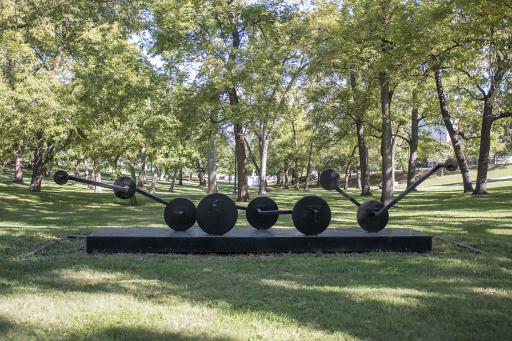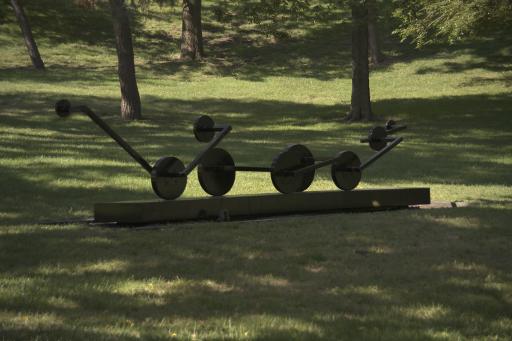Interstate 70, Richard M. Hollander
Artwork Overview
Richard M. Hollander, artist
1911–1991
Interstate 70,
1970
Where object was made: United States
Material/technique: paint; steel; welding
Dimensions:
Object Height/Width/Length (Height x Width x Length): 157.5 x 148 x 658 cm
Object Height/Width/Length (Height x Width x Length): 62 x 58 1/4 x 259 1/16 in
Object Height (Height): base 24.8 cm
Object Height (Height): 9 3/4 in
Object Height/Width/Length (Height x Width x Length): 157.5 x 148 x 658 cm
Object Height/Width/Length (Height x Width x Length): 62 x 58 1/4 x 259 1/16 in
Object Height (Height): base 24.8 cm
Object Height (Height): 9 3/4 in
Credit line: Museum purchase
Accession number: 1982.0094
On display: outdoors Marvin Grove
If you wish to reproduce this image, please submit an image request


